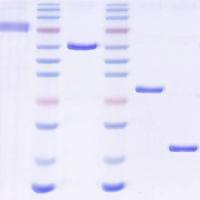Staphylococcal Cassette Chromosome mec (SCCmec) Analysis of MRSA
互联网
1118
Methicillin-susceptible Staphylococcus aureus changes to methicillin-resistant S. aureus (MRSA) on acquisition of the staphylococcal cassette chromosome mec (SCCmec ). At least five types of SCCmec elements have been reported. All the SCCmec elements share four common characteristics: (1) the elements carry the mec gene complex (mec ); (2) they carry the ccr gene complex (ccr ); (3) the elements are flanked by characteristic nucleotide sequences, both inverted repeats and direct repeats, at both ends; and (4) the SCCmec elements are integrated at the 3′-end of orfX . In the two essential components, mec and ccr , four classes of mec and five types of ccr have been identified. SCCmec elements can be defined by the different combinations of mec and ccr types. Regions other than mec and ccr within the element are designated junkyard regions (J regions). Even in the same SCCmec type, these regions are not always identical and have therefore been regarded as good targets for subtyping SCCmec elements in epidemiological studies. Nucleotide differences in the J1 region and/or the presence of inserted plasmids and transposons, most of which encode resistant determinants integrated in the J2 and J3 regions, can be used to further classify SCCmec types. In this chapter, we describe polymerase chain reaction methods to type SCCmec elements by first identifying the mec and ccr type, and subsequently identifying genes in the J regions.






![四[N-邻苯二甲酰-(S)-叔亮氨酸基]二铑双(乙酸乙酯)加合物;154090-43-4;Elemental analysis(Nitrogen) 3.30 to 4.50 %;V66234-25mg](https://img1.dxycdn.com/p/s14/2025/1029/004/8672158669127143891.jpg!wh200)


